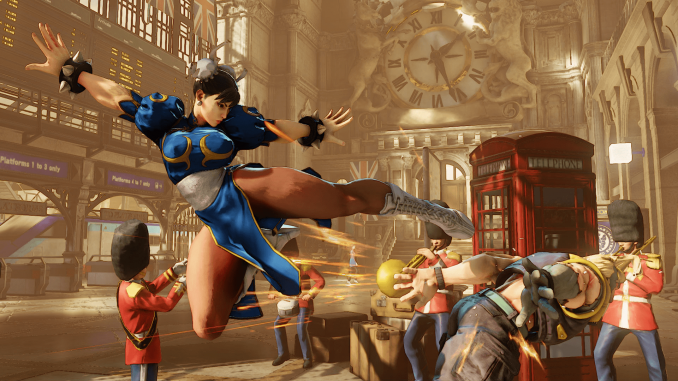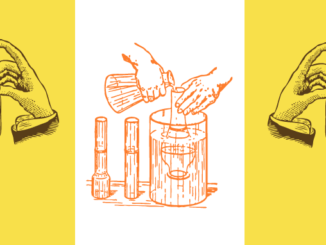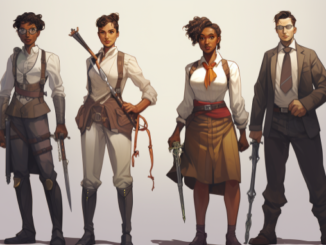
If you were to ask me to name female Chinese characters in games from my childhood, I’d be able to count them on one hand. If you asked me to name ones that were a protagonist, that figure would drop down to one, and even then the protagonist role is up for debate. Chun Li from Street Fighter, Mei Ling from Metal Gear Solid, and Ada Wong from Resident Evil; granted, they aren’t exactly child friendly games, but these were the games I watched my brother play growing up.
I didn’t see many characters like myself in the media when I was growing up. Even now, there is a distinct lack of female Chinese characters in games, movies, or books. With age came the realisation of sexuality —or in my case, the lack thereof. Factor that into an already meagre pool of representation and we’ve dropped that number down to zero. (Readers, if you know of a prolific asexual female Chinese character in any form of media, please reach out to me!)
Now, compare this to the amount of white, male protagonists in the video game world and you’re drowning in a veritable ocean of testosterone and grit.
Diverse representation is a hot topic among the gaming world and across all spheres of entertainment. The need to include voices from as many communities as possible is not so much a case of marking off an invisible checklist created by ‘social justice warriors’ or ‘political correctness police’ but rather, a case of being able to see yourself in the shoes of a character and feeling validated. Of course, this might be difficult for those who have never had the experience of erasure; after all, how do you empathise with such a topic when you’re used to seeing yourself in the media you consume?

Then there’s the topic of ethnic typecasting and the microaggression that comes with it. How often do you see Chinese characters starring in support roles where they’re a mathematical genius, computer scientist, or alike? Probably more often than not. Art informs perceptions of our reality, and as such, stereotypes are transferred onto the real people we meet in our lives and assists in creating bias before the other person even opens their mouth. There have been many times where I’ve been expected to be good at maths or know some form of martial arts. These days, I meet these expectations with a weary smile and brush it off as harmless ignorance.
There is more to diversity than the colour of a person’s skin, their culture, or their sexuality; it is a facet of a character, not the whole package deal. Just as white characters are multifaceted in goals, aspirations, and flaws, so should our depictions of characters outside this circle.
What makes mainstream media so resistant and reluctant to embrace diversity? In my experience, it can be a number of factors.

It Takes Work Writing and creating something outside of your immediate knowledge takes research, empathy, and a sense of cultural sensitivity; all things that people aren’t always ready to embrace. After all, why bother to put in so many hours of extensive research for someone to point out how you inaccurately portrayed a culture, or on the opposite side of the spectrum, have someone complain that you’re pandering to the minority?
In an attempt to diversify a cast, many well meaning creators fall into the trap of cultural shortcuts, regurgitating the westernised versions of culture they’ve consumed, or fail to consult actual members of the minority they’re attempting to represent. The result is a flat, 2D caricature that lacks the depth of their fellow straight, white cast members.

It is Outside The Audience’s Comfort Zone Humans are creatures of habit, taking comfort in the familiar. When faced with the unknown, they meet the new experience with scepticism or reluctance.
I remember watching a Hong Kong movie with some non-Chinese friends once as part of a movie night and spent the better part of it having to explain cultural references and nuances that loaned itself to the plot. My friends appreciated it, but I could see that they were a bit overwhelmed with the extra information needed to fully enjoy the movie.
Consider this type of experience in a game context. If you need all this extra information to get full enjoyment out of a game, there is a high chance that the player may not want to invest the time and effort to learn more. Games are about enjoyment, and if the player sees this task as a chore, then they won’t want to engage.

People Don’t Want to Disturb the Status Quo Existing media of predominantly white casts (with a male hero), has the backbone of Hollywood and video games for as long as anyone can remember. The formula works and sells, and in a world where money rules, there are few willing to take the risk of changing this. This point ties back in with the idea of comfort and fear of poor portrayal.
Of course, there are more, but these are the main ones I can think of.

So, how do we handle the challenge that is diversity? The obvious answer is to have more diverse content creators and key decision makers. We live in a colourful world of many different races, sexualities, and genders; it should not be up to one singular group to take the sole responsibility of representation. By working together, communicating, and respecting different experiences, can we begin to create characters that feel as real as the groups they portray.
In the end, diversity is not a case of being able to relate to every single character in the cast. It’s a case of being able to find at least one character you can empathise with and relate to, creating a bond and allowing for emotional investment. Only by seeing ourselves in the world, do we feel empowered and inspired to create and do more.
- Navigating the World of Gaming as a POC - 19th August 2020
- Skills I Learned by Playing Dungeons and Dragons - 19th August 2020





Great article, Sam. I wonder what you think about whether things are any different in the world of film, particularly now recently, and if that stands to impact games? I feel like a path has been beaten through commercial and critical success of films like Black Panther, Beasts of the Southern Wild and Tangerine that while it doesn’t come closer to fully correcting any imbalance, puts films ahead of games.
Do you feel the same? And either way, did this their any light on the future for games?
Gosh, that’s hard to say. While there has been more exposure as far as Chinese characters go, western media still has an incredibly long way to go. For example, for this article I looked up Chinese video game characters on Google just to see what the difference is now and was met with a slew of scantily dressed women or old Sifu type men in fighting games, toting the “Chinese martial arts” trope. Not to say martial arts isn’t an important aspect of my culture, but it definitely isn’t the sole defining feature.
There’s also the huge hornet nest that is the sexualisation of female characters as a whole. “Exotic” characters that are fetishised for their otherness. Mei from Overwatch is a good example. With female Chinese characters, there tends to be two holes it all falls down. Stern, Asian Dragon Lady and demure, subservient woman.
I’d like to think there is hope for games, but unless companies start consulting and including BIPOC voices, we’re just going to keep recycling the old tropes over and over again.
Thanks, Sami. Definitely agree that all mediums have a long way to go, and any progress there may be can only be separated out from the lazy tropes with diligent sifting.
Absolutely, it should also be worth noting that we need to celebrate the mediums that DO portray minorities in a respectful and empathetic way. Too many times, they go by unnoticed and BIPOC creators are left feeling unheard.
Good point, Sami. One of the things I’ve been discussing for the potential future iteration of Ludogogy is the possibility of giving out awards. Maybe that would be a way of recognising games which do show respect and empathy. Fancy being on an awards committee? Watch this space.